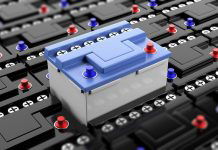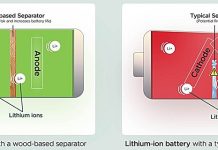
Most of us don’t think twice about the process of evaporation, yet it plays a pivotal role in our planet’s ecosystem and is responsible for half of the solar energy absorbed by the Earth.
Since 2017, a fascinating field of research has emerged, focusing on how to tap into the energy potential of evaporation.
This is done through what’s known as the hydrovoltaic (HV) effect, which generates electricity as fluids pass over the charged surfaces of specially designed nanoscale devices.
These tiny devices contain nanochannels that create a continuous flow of liquid due to evaporation, similar to how water moves through the microcapillaries of plants.
Despite the existence of hydrovoltaic devices, there’s been a gap in our understanding of how exactly they work at the nanoscale and under different conditions.
Giulia Tagliabue and her Ph.D. student Tarique Anwar from the Laboratory of Nanoscience for Energy Technology took on the challenge to bridge this knowledge gap.
They combined experiments and sophisticated computer modeling to delve into the inner workings of these devices, focusing on fluid and ion flows and the electrostatic interactions at play.
Their groundbreaking research has led to a surprising discovery: HV devices can efficiently operate across a broad range of water salinity levels.
This contradicts the previous belief that only highly purified water could be used, significantly broadening the potential applications of HV technology.
By using a novel method known as nanosphere colloidal lithography, the team was able to construct a device with a hexagonal network of silicon nanopillars.
This setup created ideal conditions for studying the movement of evaporating fluids and the interactions between the fluid and the solid surfaces of the device.
Anwar explained how confining liquids to nanochannels and allowing them to flow through can generate electrical current and voltage.
This is because the confinement leads to a selective presence of ions, based on their polarity relative to the surface charge of the device.
Tagliabue highlighted the practical implications of their findings. With the ability to operate using fluids with higher ion concentrations, it’s now possible to design hydrovoltaic devices that work with tap or seawater, not just purified water.
This discovery opens up new avenues for using HV devices in a wide array of settings and applications.
Given that evaporation is a constant process occurring under various conditions, including at night, the potential uses for improved HV devices are vast.
The team is excited about the possibility of developing prototypes for waste-heat recovery and renewable energy generation, testing them in real-world scenarios such as on Lake Geneva.
Moreover, the versatility of HV devices means they could power a wide range of connected devices, from smart TVs to health and fitness wearables, anywhere there’s liquid or moisture present.
The integration of light and photothermal effects to control surface charges and evaporation rates in HV systems is another exciting avenue for Tagliabue and her team.
Beyond energy generation, there’s also the potential for HV systems to contribute to clean water production. By leveraging natural evaporation in desalination processes, it’s conceivable to harvest fresh water from saltwater while simultaneously generating electricity.
This breakthrough in hydrovoltaic technology not only advances our understanding of how to harness the power of evaporation but also paves the way for innovative solutions to energy generation and water purification, marking a significant step towards sustainable and renewable energy sources.
The research findings can be found in Device.
Copyright © 2024 Knowridge Science Report. All rights reserved.



